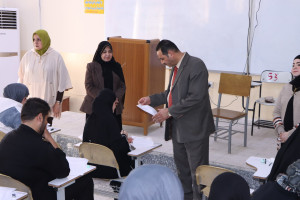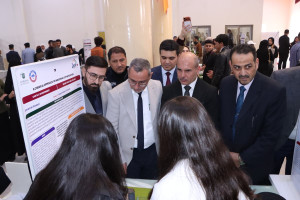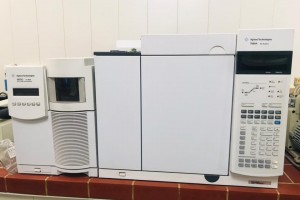
The College of Education for Pure Sciences, Department of Life Sciences, University of Basra organized a scientific lecture on the molecular diagnosis of vancomycin resistance genes for some types of pathogenic bacteria in Basra Governorate.
The lecture presented by the student (Mohamed Abdel Bari Thamer) included that antibiotics have been used in the treatment of bacterial diseases for about 80 years. Vital is currently in human and veterinary medicine, but its efficacy is threatened by microbial resistance. Currently, there is concern about the potential spread of antimicrobial resistance (Florez et al., 2005)).
When bacteria are repeatedly exposed to the same antibiotic, the bacteria can change and no longer be affected by the antibiotic due to alteration of the bacterial wall, secretion of lytic enzymes, modification of receptor sites, or genetic reasons (Cloete, 2003).
Antibiotic resistance can also result from significant genomic changes, such as the acquisition of whole plasmids or mobile elements that encode resistance factors.
(Manijeh et al., 2012).
Anti-vancomycin:
Vancomycin belongs to the group of glycopeptides, with a complex structure that was used in treatment in the 1950s.
This antibiotic is effective against most gram-positive bacteria and is the best treatment
Especially for patients who are allergic to penicillin, which is effective against bacteria
S. aureus resistant to methicillin (MRSA) and bacteria
Clostridium difficile and Enterococcus faecalis (Depardieu et al., 2004).
The mechanism of action of vancomycin:
This antagonist works by inhibiting a stage of building the bacterial cell wall of the peptidoglycan by linking it to the carboxyl terminus D-alanyl-D-anlnin, preventing these antigens from participating in building the cell wall, and vancomycin linking with the peptide prevents its binding to the active site of the enzyme and prevents Cross-linking occurs between peptidoglycan chains.
Mechanism of bacterial resistance to vancomycin:
Vancomycin resistance results from a change in the physiological system of building the cell wall, where the strains have the vancomycin resistance gene VanA, VanB, VanC, which adds D-lactate and binds it to the end of the peptide instead of D-alanine and therefore D-Ala -D-lac instead of the D-link -Ala -D-Ala (Walsh, 2001).
Objectives of the lecture
To investigate pathogenic bacteria that are resistant to Vancomycin antibiotic.
And isolation and diagnosis of those bacteria by traditional methods.
Isolation and identification of these bacteria by molecular methods by (VanA, VanB) amplification.
Vancomycin resistance








